Air Raid to Al-Waleed (8)
The Story of Demolishing Fighters and the Equipment in Al-Waleed Triple Military Bases Known as H-32016-02-14
Air Raid to Al-Waleed (H-3)
The Story of Demolishing Fighters and the Equipment in Al-Waleed Triple Military Bases Known as H-3
By: Brigadier General Ahmad Mehrnia
Tehran, Sooreh Mehr Publications Company
2010 (Persian Version)
Translated by: Zahra Hosseinian
Retired pilot, Colonel Gholam Hossein (Behrouz) Naghdibeik says:
“One day, a number of experienced pilots of other bases were invited to Hamadan. We ourselves were not then aware that what is happening. Operation Deputy of base called newly arrived pilots and a number of us to the command post of air base and explained general points of our mission cautiously. I think, of course, the leader had been well filled in on the details.
Fourteen F-4 fighter/bombers armed with bombs and ammunition. Although we thought that the operation is completely confidential and no one knew it, but one of non-commissioned officers who was a friend of mine, asked me: ‘attacking Iraqi’s Tupolev base, what’s the matter?’ as soon as we left the command post. Then-commander, Colonel Golchin was with us and I quickly raised the issue with him. However, it was decided to carry out the mission. I remember he justified that a dozen Phantoms must implement the main operation according to the plan and two Phantoms accompany them near the borders of North West, as a substitute; and if there is no need, back to the insider base. Also, two tanker aircraft will be waiting for delivering fuel above the Lake Uremia.
Leading of 14 aircraft, which is very difficult task, was the responsible of Lieutenant Colonel Ali Akbar Sabounchi. I and Major Parviz Jafarby were at the Air Cover team and had taken off before and flew four hours and thirty minutes. Some minutes after us, fourteen Phantoms took off from the base. There were other flights for air cover that took off before and after the main team and went to their areas.
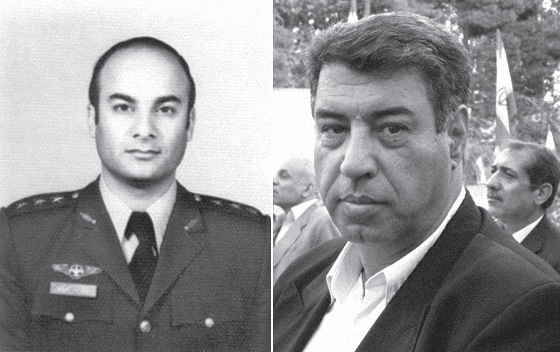
Parviz Jafarby (the captain) and Behrouz Naghdibeik (2008)
We expected that our colleagues return to base after four hour and thirty minutes, but it hadn’t taken two hours that it was announced the mission has canceled and all aircrafts are landing. After landing, we went to command post. Other pilots arrived too. I asked a friend, who was on the flight, what the matter is and he said: ‘we arrived to the predefined area above the Lake Uremia in which the tankers were waiting for us and filled our tanks in turn. Finding the tanker aircrafts and connection to boom tube, although, was very difficult without conversation with the boom operator, but we all were able to refuel without any difficulty, with the favor of God and backing of all colleagues’ strong experience; All seven aircrafts from one tanker! We all refueled safely at an altitude of two thousand feet (about six hundred meters above ground level). Refueling at this height was a new experience for me and seemed a bit strange. Of course, flying of two giant Boeings 707 at that altitude was more surprising than our refueling!”
He continues: “the seventh aircraft still were refueling that the first-refueled aircraft signaled the external tanks of his wings have been emptied. So, it was connected to the tanker again for continuing its refueling. Shortly after, others suffered the same problem. We just realized that we have fallen into a vicious circle and the large number of aircrafts didn’t give us enough opportunity for maximum use of fuel, whose each drop was vital for us. I remember that I heard the password ‘sword’ on the radio; that means the leaking out of mission and its cancelling. Due to these two reasons, the leader decided to stop the mission and we returned to the base. However, it was a good exercise.”
Major Farajollah Baratpour and his co-pilot at rear cabin[1], first Lt. Abbas Akbari, Mahmoud Eskandari, Captain Iraj Osareh, Naser Rezai, Gholam Abas Rezaei Khosravi, Mohammad Labibi, Hassan Zndkarimi, Bahram Firouzi, Mohammad Reza Gharebaghi, first Lt.[2] Nasser Bagheri and Mansour Elahi at the rear cabin, and so on were some pilots of Phantoms which were in this flight crew, aimed to attack discussed target at the West Iraq. Major Ghafar (Mohsen) Abdul-Alizadeh, pilot commander of one of Boeing 707 tankers over the Lake Uremia, whose co-pilot was Major Ghodrat Turkman, approve above issue.
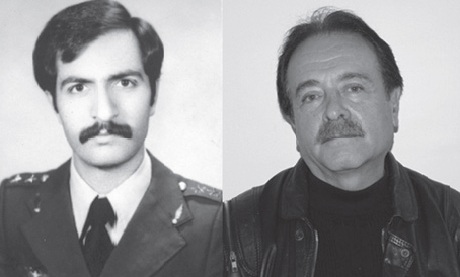
Second Brigadier General Pilot Nasser Karimi and Nasser Bagheri
However, all Phantoms returned to base with unused ammunition and different types of bomb, landed on the runway one by one, and their waited friends and colleagues became happy. Although they themselves were not satisfied with it!
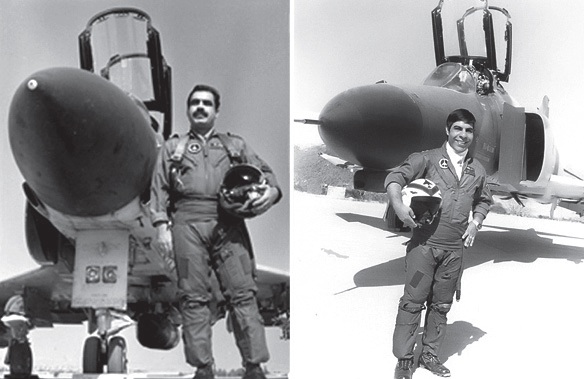
Capt. Mohammad Ateeghechi and first Lt. Mansoor Elahi, beside the F-4
According to Bharatpour[1], immediately after this unsuccessful operation, Iraqi radio declared that: “we were aware of your mission and awaited you completely prepared. We invite you to come to our territory again, so to confront with our good reception!” According to the evidence, infiltrators had probably leaked out the mission; since listening posts haven’t registered anything that showed the enemy is aware of our mission at the time of operation. Liberated prisoner, Brigadier General Pilot Khosro Ghaffari, whose aircraft was crashed in Iraq territory at 18th Khordad 1364 during an operation by air defense and was captured, says:
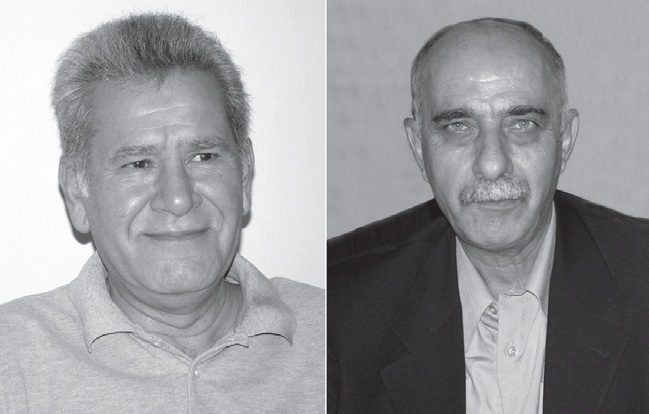
Liberated prisoner, Brigadier General Pilot Khosro Ghaffari and Mohammad Reza Labibi
“During the interrogation, one of Iraqis officials pointed out that: ‘we fully knew Iranian air force intention for attacking H-3 and even the flight routs of pilots early in the war. You were very lucky that the mission did not implement; unless a good reception was awaited your team. However, we were surprised in operation of fourth April 1981, because we thought you have come to the conclusion that the mission won’t be fulfilled.’”
Reminding of this matter suggests the importance of such an operation that has caused Iraqi commanders still don’t forget it after four years! Pilot Ateeghechi also says:
“We crashed one of enemy’s aircraft in a mission. In an interview I had with the captured pilot, he claimed that he had fully known the plan of attacking the West of his country and its map had been on the table of Iraqi commanders!”
In this regard, Retired Amir, Second Brigadier General Nasser Rezai says:
“At the first attempt of doing operation, I was among the team; so, considering the high risk of mission, I filled my car fuel tank with petrol nightly, so that if something happen to me, at least my families are able to go to Tehran. That time, the petrol was allocated quota. The responsible of gas station who was of Kaboudarahang’s people, asked me during fueling: “I’ve heard you have an important operation tomorrow, Captain! What's going on?” It was here that I realized the operation should be leaked out.
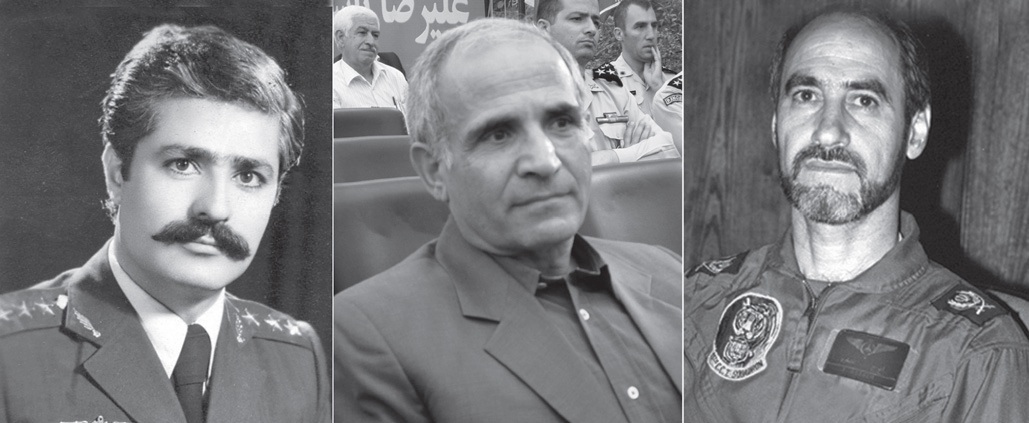
Brigadier General Iraj Osareh, Second Brigadier General Nasser Rezaei and Colonel Mohammad Reza Gharebaghi (captain)
[1]. Amir Second Brigadier General Pilot Farajollah Baratpour was retired in 15th Aban 1377.
[1]. A small room or space, in which the fighter pilot sits, is called ‘cabins’. Some aircrafts have one cabin and some have two cabins. F-4 Bombers have two cabins.
[2]. It should be noted that for some time after the end of the war, the rank of third Lt. would characterize with a pentagon, second Lt. with a star, first Lt. with two star and captain with three stars on each shoulder. Then, star was substituted for pentagon and one star was added to each of other ranks (now Capt was characterized with four stars). Thus, since these memories are related to the early wartime, we want dear readers to be aware of ranks they are seeing in the pictures.
Number of Visits: 6932
http://oral-history.ir/?page=post&id=6174
